Aideen Barry
The Song of the Bleeding Tree
19 Jul - 10 Sep 2023
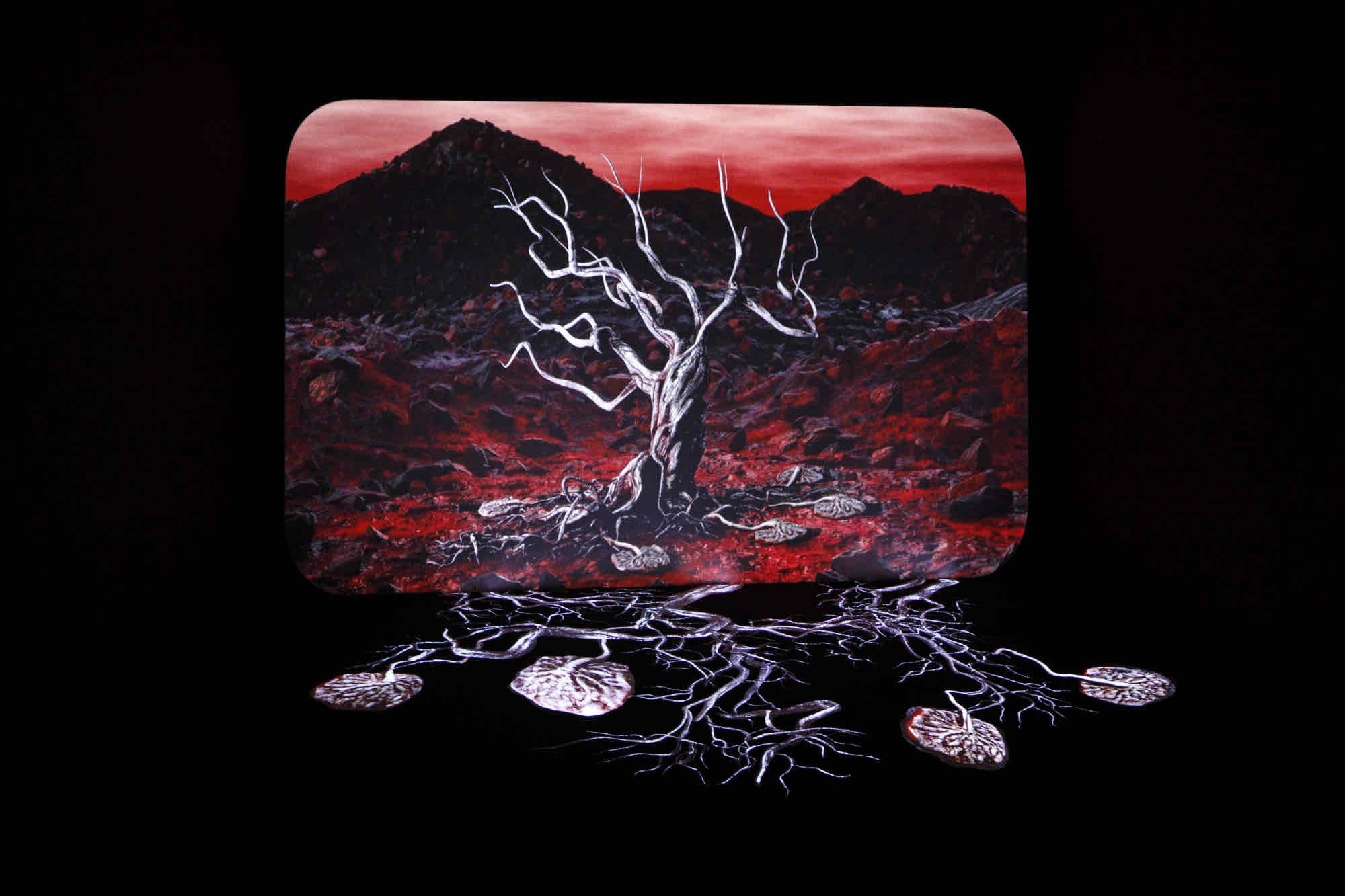
Aideen Barry, The Song of the Bleeding Tree, 2023, 2 channel video with 4 channel sound, projection with vinyl paper cut outs, 65 min 30 sec, courtesy of the artist. Exhibition view Aideen Barry, Salzburger Kunstverein 2023, photo: Rainer Iglar, © Salzburger Kunstverein.
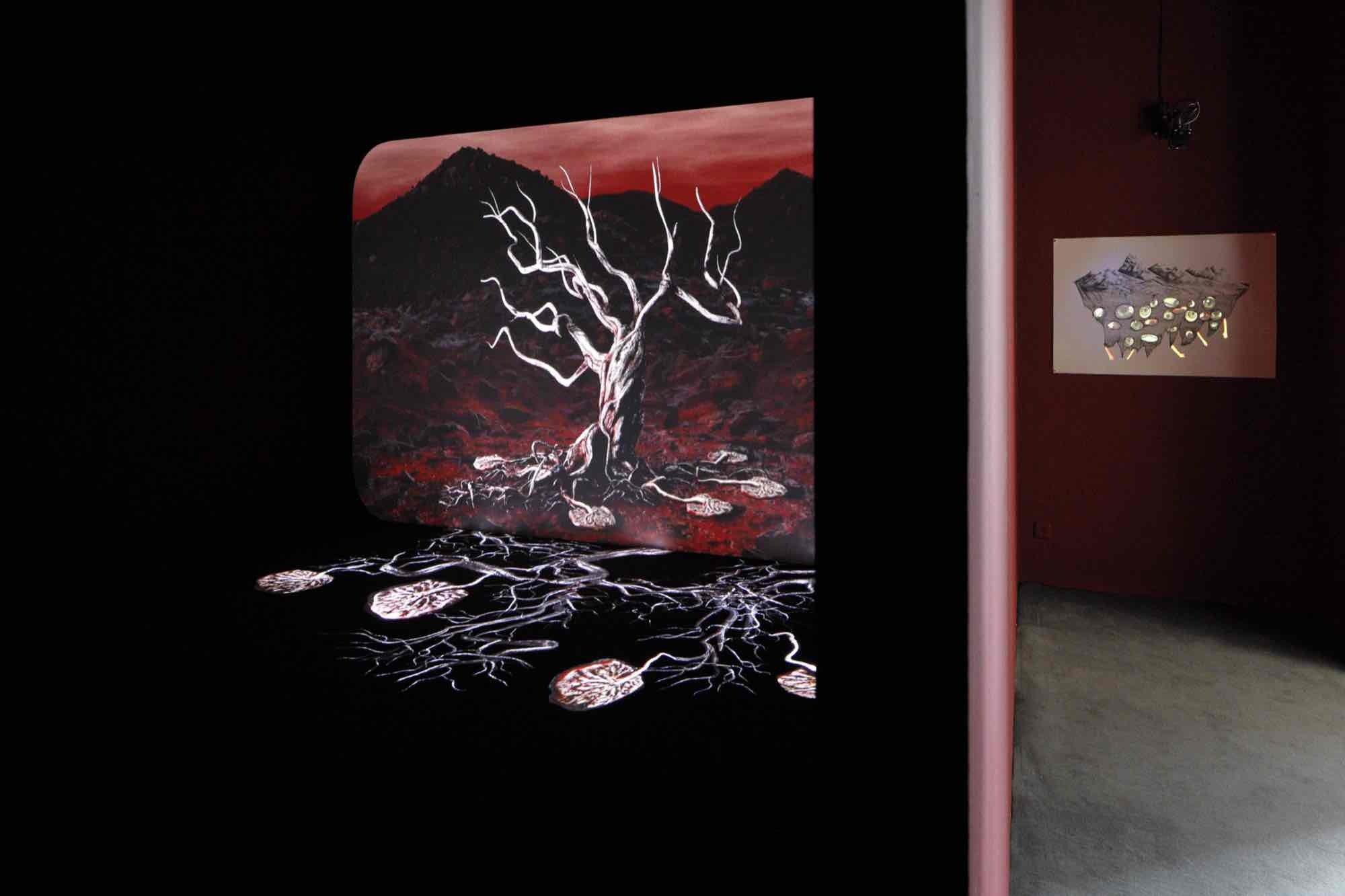
Exhibition view Aideen Barry, Salzburger Kunstverein 2023, photo: Rainer Iglar, © Salzburger Kunstverein.
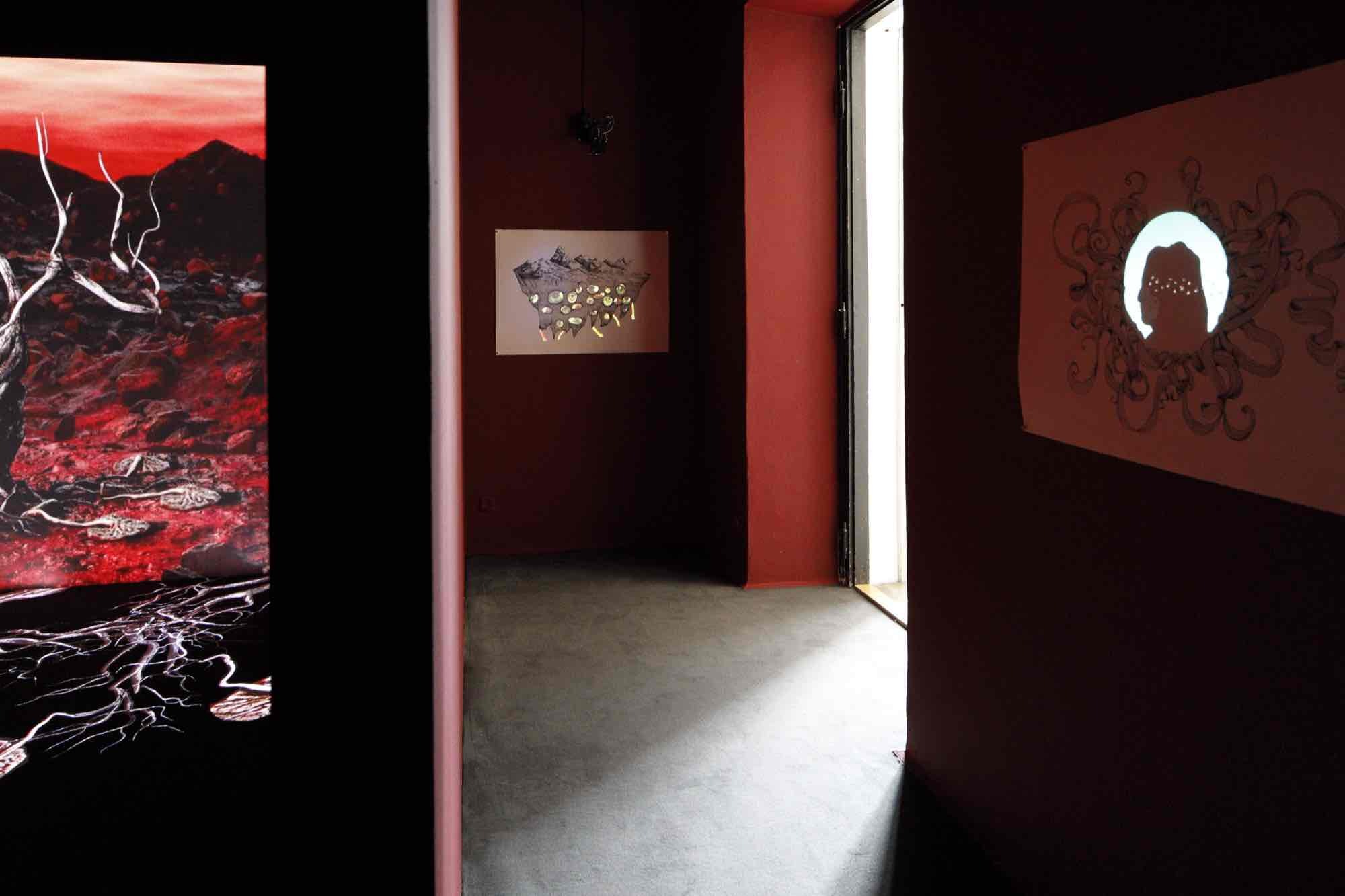
Exhibition view Aideen Barry, Salzburger Kunstverein 2023, photo: Rainer Iglar, © Salzburger Kunstverein.
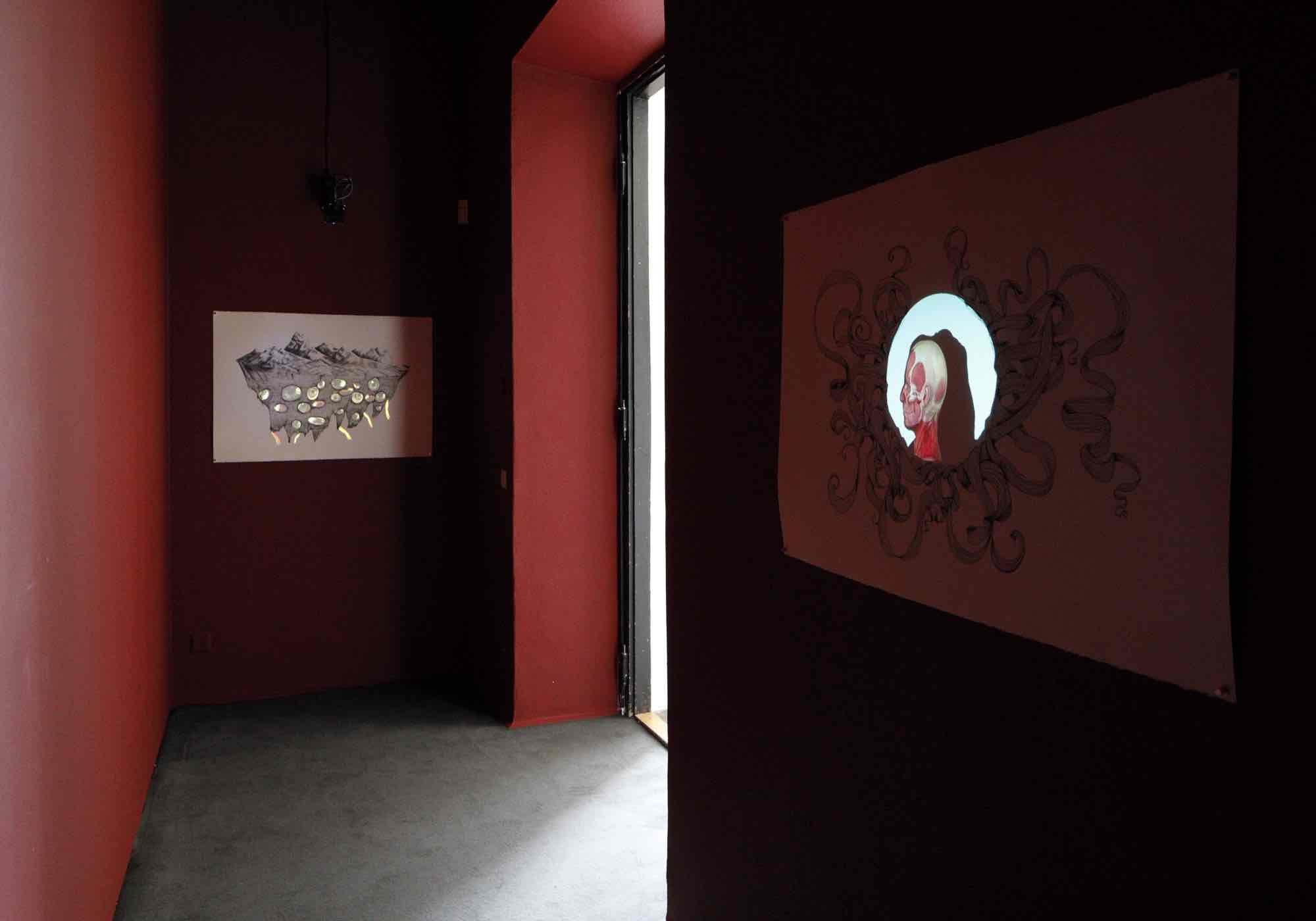
Left: Aideen Barry, Isle de lune, 2017, pen and ink on Fabriano paper, drawing and 1 channel video projection, 70 x 100 cm, courtesy of the artist Aideen Barry and Galeria Isabel Hurley. Right: Breathing Being, 2023, pen and ink on Fabriano paper, drawing and 1 channel video projection, 70 x 100 cm, courtesy of the artist Aideen Barry and Galeria Isabel Hurley. Exhibition view Aideen Barry, Salzburger Kunstverein 2023, photo: Rainer Iglar, © Salzburger Kunstverein.
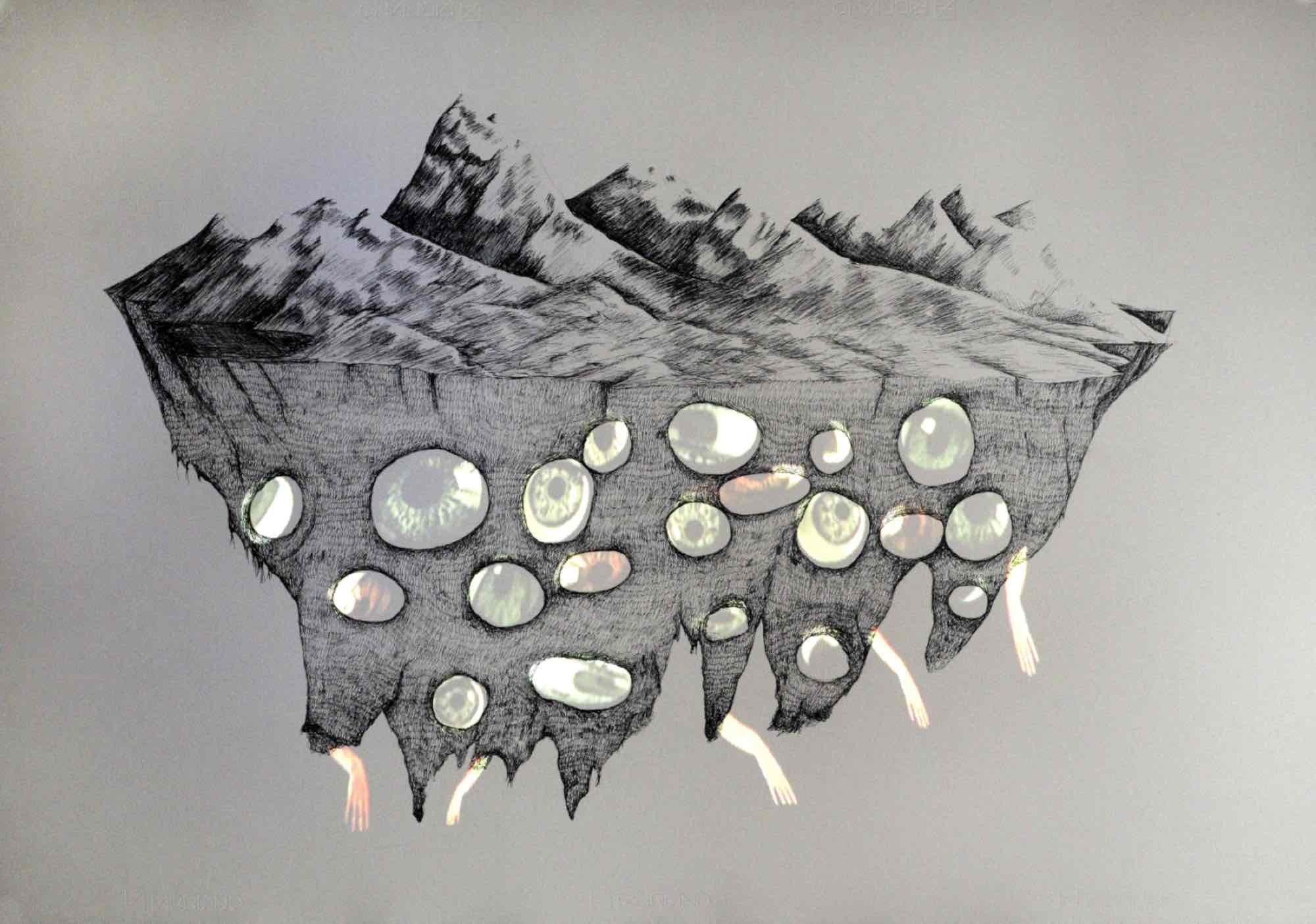
Aideen Barry, Isle de lune, 2017, pen and ink on Fabriano paper, drawing and 1 channel video projection, 70 x 100 cm, courtesy of the artist Aideen Barry and Galeria Isabel Hurley. Exhibition view Aideen Barry, Salzburger Kunstverein 2023, photo: Rainer Iglar, © Salzburger Kunstverein.
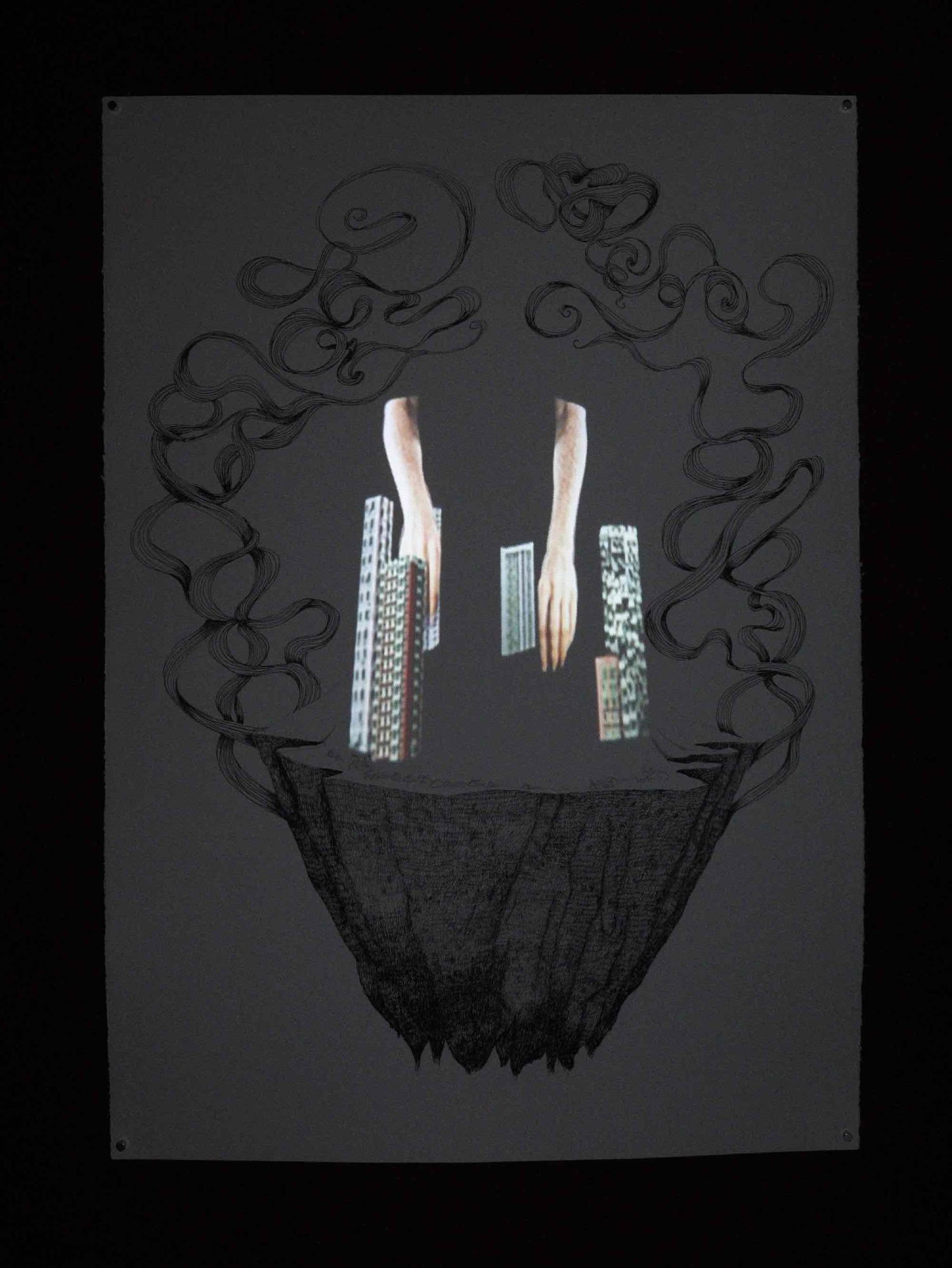
Aideen Barry, Burning World, 2017, pen and ink on Fabriano paper, drawing and 1 channel video projection, 100 x 70 cm, courtesy of the artist Aideen Barry and Galeria Isabel Hurley. Exhibition view Aideen Barry, Salzburger Kunstverein 2023, photo: Rainer Iglar, © Salzburger Kunstverein.
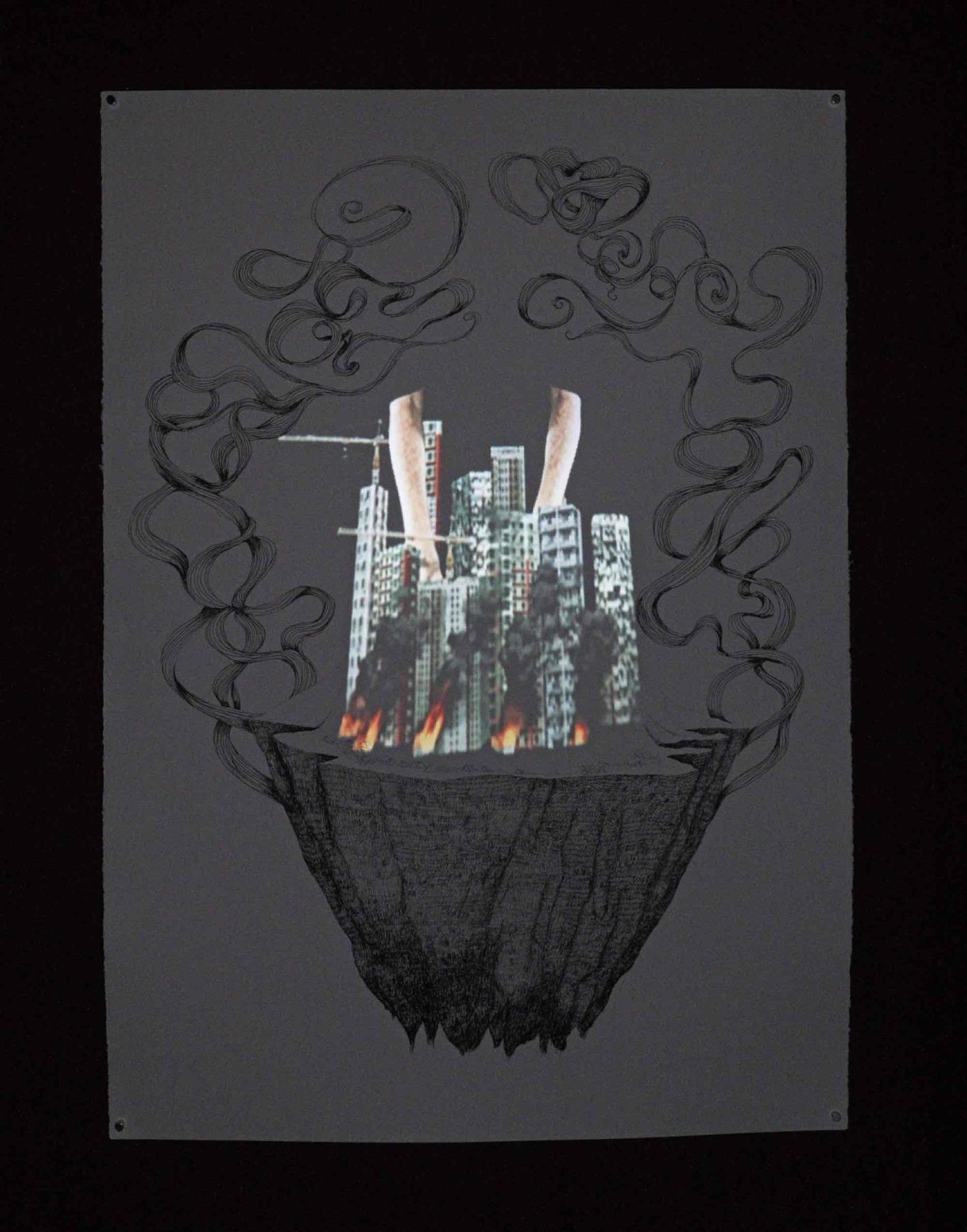
Aideen Barry, Burning World, 2017, pen and ink on Fabriano paper, drawing and 1 channel video projection, 100 x 70 cm, courtesy of the artist Aideen Barry and Galeria Isabel Hurley. Exhibition view Aideen Barry, Salzburger Kunstverein 2023, photo: Rainer Iglar, © Salzburger Kunstverein.
Irish artist Aideen Barry presents a series of drawings, and her 2-channel video installation with 4 channel sound entitled “The Song of the Bleeding Tree” in the Kabinett. Inspired by her ongoing research in the UCD Folk Archives, Barry references the Irish tradition of placing afterbirths on the roots of a hawthorn tree; the video portrays a tree bleeding and weeping, embodying the suffering of the earth and its inhabitants alike. This immersive artwork—projected onto the walls and floor of the Kabinett—is a scenography of strangeness and sorrow for our relationship with the natural world and an operatic expression set in the European capital of opera. The sound installation is created in collaboration with composer Stephen Shannon.
Aideen Barry (*1979) lives and works in Ireland, USA and Europa. She is an artist whose means of expression are interchangeable, incorporating performance, moving image and sculptural manifestations. Employing visual trickery to create a heightened suspension of reality, the common denominator of Barry’s work is an attempt to deal with anxiety. www.aideenbarry.com
Text by Séamus Kealy
In the Kabinett Irish artist Aideen Barry presents a series of drawings with a 2-channel video installation with 4 channel sound entitled “The Song of the Bleeding Tree.” This immersive artwork—projected onto the walls and floor of the Kabinett—is a scenography of strangeness and sorrow for our relationship with the natural world and an operatic expression deliberately set in Salzburg, which in the summer is known as the European capital of opera.
The looped video portrays a tree, weeping and bleeding tears, set within a dark, crimson and apocalyptic landscape. The film arises out of previous work by the artist, and is such an extension of her multimedia performance, moving image and sound installation “Oblivion / Seachmalltacht / ᖃᐅᔨᒪᔭᐅᔪᓐᓃᖅᑐᑦ.” Produced in collaboration with the Inuit Canadian performer RIIT ᕇᑦ, Irish harper Aisling Lyons and award-winning designer and milliner Margaret O’Connor, as well as Turlough O’Carolan, Cathal Murphy & Stephen Shannon who arranged and composed the music, “Oblivion” confronts the existential threat to the planet. Barry examines the role of art and artists in this time of great uncertainty, environmental collapse and the prospect of a world of ruin. The motif of “being the last generation of artists” runs throughout this artwork. This apocalyptic pop song and performance also references the bardic travelers of Ireland in the 15th Century as well as the censure of Irish music under colonial rule (Queen Elisabeth’s banning of Irish music, where harpists were hanged from trees by their strings), drawing comparisons with colonial travesties that the indigenous peoples experienced in subsequent centuries. The central viral-like motif in the film makes reference to the poisoning eye of Balor as merged with the spectacle of hyper-paced contemporary capitalism and cryptocurrencies. In Irish mythology, Balor was a malevolent supernatural being with a large eye that wreaks destruction. He has been interpreted as a personification of the scorching sun, and has also been likened to figures from other mythologies, such as the Greek Cyclops. His persona was known to wreak havoc, much alike humanity in its entirety upon the earth itself.
“The Song of the Bleeding Tree” likewise expresses dread, sorrow and anger concerning environmental collapse. Aideen Barry had spent much time researching at the Irish Folk Archives at University College Dublin. Among her findings there was the Irish tradition of placing human and animal afterbirths on the roots of a hawthorn tree. The video thus portrays a tree bleeding and weeping, embodying the suffering of the earth and its inhabitants alike. Also in her research, Barry came across the records from interviews by children with elder generations, including survivors of the famine. These individuals told the tragic tales of their experiences, expressing that they had also believed they were the last generation of the Irish people. Barry explores the relationship between this great human tragedy and the potential environmental collapse to come, while referencing Irish pre-Christian and indigenous folklore alike. In this regard, she is also interested in the ideas of Bracha Ettinger, an Israeli artist and philosopher influenced by the ideas of Freud, Lacan, Guattari, Lyotard and others, who explores the idea of inheriting folklore, matriarchal traditions and other forms of ancient knowledge as a counterpoint to colonialism, capitalism and the travesties of western progress.
The operatic sound installation is created in collaboration with composer Stephen Shannon, and is influenced by lines from the UCD folklore archives, singing “you are cutting me … Matrixial Legacies … pages are the ghosts of trees past.” The tree thus wails and weeps due to its existence within the trials of human folly and tragedy. The red cavern-like room that houses this installation arises out of Barry’s fascination with the Wunderkammer, where the exotic is here instead presented as the tragic.
Aideen Barry lives in Silver Mines, Tipperary in Ireland, an area that had been exploited by Canadian mining companies. The destruction has left an environmental impact to this day where vast amounts of arsenic used to strip the land of gold, silver and copper remain, leaving the landscape poisoned for generations to come. The topic of environmental catastrophe is thus very close to home to the artist. She and her family cannot walk into much of the landscape around their country house due to this poisoning.
“The Song of the Bleeding Tree” is thus an artwork of outrage and resistance, produced out of multiple cultural, mythological and personal references, and inspired by matriarchal legacies.
Exhibition curated by Séamus Kealy
Aideen Barry (*1979) lives and works in Ireland, USA and Europa. She is an artist whose means of expression are interchangeable, incorporating performance, moving image and sculptural manifestations. Employing visual trickery to create a heightened suspension of reality, the common denominator of Barry’s work is an attempt to deal with anxiety. www.aideenbarry.com
Text by Séamus Kealy
In the Kabinett Irish artist Aideen Barry presents a series of drawings with a 2-channel video installation with 4 channel sound entitled “The Song of the Bleeding Tree.” This immersive artwork—projected onto the walls and floor of the Kabinett—is a scenography of strangeness and sorrow for our relationship with the natural world and an operatic expression deliberately set in Salzburg, which in the summer is known as the European capital of opera.
The looped video portrays a tree, weeping and bleeding tears, set within a dark, crimson and apocalyptic landscape. The film arises out of previous work by the artist, and is such an extension of her multimedia performance, moving image and sound installation “Oblivion / Seachmalltacht / ᖃᐅᔨᒪᔭᐅᔪᓐᓃᖅᑐᑦ.” Produced in collaboration with the Inuit Canadian performer RIIT ᕇᑦ, Irish harper Aisling Lyons and award-winning designer and milliner Margaret O’Connor, as well as Turlough O’Carolan, Cathal Murphy & Stephen Shannon who arranged and composed the music, “Oblivion” confronts the existential threat to the planet. Barry examines the role of art and artists in this time of great uncertainty, environmental collapse and the prospect of a world of ruin. The motif of “being the last generation of artists” runs throughout this artwork. This apocalyptic pop song and performance also references the bardic travelers of Ireland in the 15th Century as well as the censure of Irish music under colonial rule (Queen Elisabeth’s banning of Irish music, where harpists were hanged from trees by their strings), drawing comparisons with colonial travesties that the indigenous peoples experienced in subsequent centuries. The central viral-like motif in the film makes reference to the poisoning eye of Balor as merged with the spectacle of hyper-paced contemporary capitalism and cryptocurrencies. In Irish mythology, Balor was a malevolent supernatural being with a large eye that wreaks destruction. He has been interpreted as a personification of the scorching sun, and has also been likened to figures from other mythologies, such as the Greek Cyclops. His persona was known to wreak havoc, much alike humanity in its entirety upon the earth itself.
“The Song of the Bleeding Tree” likewise expresses dread, sorrow and anger concerning environmental collapse. Aideen Barry had spent much time researching at the Irish Folk Archives at University College Dublin. Among her findings there was the Irish tradition of placing human and animal afterbirths on the roots of a hawthorn tree. The video thus portrays a tree bleeding and weeping, embodying the suffering of the earth and its inhabitants alike. Also in her research, Barry came across the records from interviews by children with elder generations, including survivors of the famine. These individuals told the tragic tales of their experiences, expressing that they had also believed they were the last generation of the Irish people. Barry explores the relationship between this great human tragedy and the potential environmental collapse to come, while referencing Irish pre-Christian and indigenous folklore alike. In this regard, she is also interested in the ideas of Bracha Ettinger, an Israeli artist and philosopher influenced by the ideas of Freud, Lacan, Guattari, Lyotard and others, who explores the idea of inheriting folklore, matriarchal traditions and other forms of ancient knowledge as a counterpoint to colonialism, capitalism and the travesties of western progress.
The operatic sound installation is created in collaboration with composer Stephen Shannon, and is influenced by lines from the UCD folklore archives, singing “you are cutting me … Matrixial Legacies … pages are the ghosts of trees past.” The tree thus wails and weeps due to its existence within the trials of human folly and tragedy. The red cavern-like room that houses this installation arises out of Barry’s fascination with the Wunderkammer, where the exotic is here instead presented as the tragic.
Aideen Barry lives in Silver Mines, Tipperary in Ireland, an area that had been exploited by Canadian mining companies. The destruction has left an environmental impact to this day where vast amounts of arsenic used to strip the land of gold, silver and copper remain, leaving the landscape poisoned for generations to come. The topic of environmental catastrophe is thus very close to home to the artist. She and her family cannot walk into much of the landscape around their country house due to this poisoning.
“The Song of the Bleeding Tree” is thus an artwork of outrage and resistance, produced out of multiple cultural, mythological and personal references, and inspired by matriarchal legacies.
Exhibition curated by Séamus Kealy
